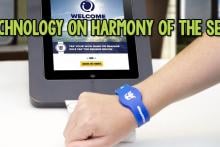Royal Caribbean has selected AIMS Innovation to monitor its Microsoft BizTalk system, at the cruise line's Florida headquarters and aboard its cruise ships. Royal Caribbean will use the AIMS for BizTalk multi-tenant solution to monitor and manage the large bursts of traffic and information downloads that occurs when its cruise ships come into port. From its Florida "mission control", Royal Caribbean can check the status of each ship's BizTalk Solution, no matter where it is in the world.
Max Schmidt, vice president of IT Infrastructure, Operations and Information Security for Royal Caribbean, commented on the new deal, "In order to deal with bursts of information across our system, we needed a more flexible, intuitive BizTalk monitoring solution that could help us anticipate problems and lead us quickly to the exact location of errors to fix them in a short timeframe. We chose AIMS for BizTalk because it gives us an effective tool to quickly and accurately monitor our data without using extensive resources to manage it or paying for expensive software customization."
Royal Caribbean will benefit from the deal in the following ways
Decreases the cruise line's monitoring time. IT administrators only need to log into one environment to automatically get information from all the ships. Plus, administrators don't need to determine the operational threshold for each system.
Prevents downtime. AIMS for BizTalk sends early warning alerts before downtime occurs and pinpoints the problem's exact location versus making IT staff guess which warnings are real.
Learns and adapts to systems' behavior. AIMS for BizTalk modifies alerts over time dynamically "self learning" traffic patterns to make alerts more accurate over time. The dynamic nature of AIMS is critical to Royal Caribbean due to the varying loads during boarding and disembarkation which is considerably higher than normal operations. Other products gave us constant false alerts making our previous monitoring solutions unusable.
Can easily and quickly be installed by any IT staff member. It takes 5 minutes without special training through Microsoft Azure cloud or a local install.






